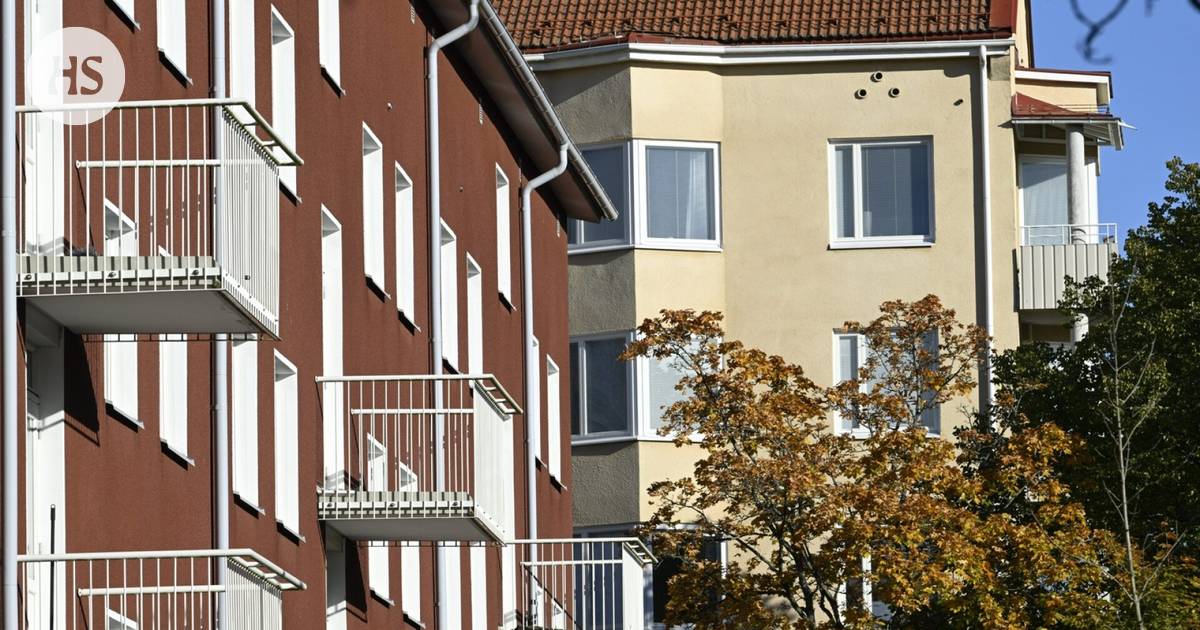Housing trade|Apartments are now cheaper in Finland than they have been in many decades, when prices are compared to salaries.
The summary is made by artificial intelligence and checked by a human.
Apartment prices are now the cheapest in Finland in relation to available earned income during more than 40 years of statistical history.
In the capital region, prices have not decreased as much.
In the capital region, prices have fallen to the level of the late 1990s, when they are compared to available earned income.
Money For a long time, a new home buyer or a first-time home buyer has been agonizing over when apartment prices really start to be cheap. Prices have come down, but are they still cheap?
Now at least one answer to the question has been found. It says that housing prices are now cheaper in Finland than ever before, when the yardstick is used for what the wage income can buy.
The measurement history goes back more than 40 years, i.e. to 1978. The situation applies to housing prices in Finland as a whole.
The information appears from calculations made by the chief economist of housing financier Hypo Juho Keskinen.
The calculation uses Finland’s average nominal housing prices, i.e. prices that do not take into account the effect of inflation. These prices are relative to disposable income, i.e. average wages after deduction of taxes.
Keskinen’s calculation reveals that, by this measure, apartments are now even a little cheaper than during the 1990s recession.
Differences Inside Finland, however, they are big.
Prices in the capital region have of course also fallen, but according to Keskinen, the buyer’s market is not quite as good when prices are compared to income.
Although the prices in Helsinki are not the cheapest, they have also fallen to the level of a few decades ago in relation to income.
According to Keskinen, when disposable income is compared to housing prices, the home buyer in the capital region is now in the same situation as it was in the late 1990s. At that time, Finland had already emerged from the recession, but the heating up of the 21st century housing market was yet to be seen.
“This is also important when prices in the SME region run out of reach for many low- and middle-income earners,” Keskinen points out.
With, the fact that apartments are now cheap in relation to wages is due to both the development of wages and the development of housing prices, explains Keskinen.
Salaries usually rise at the rate of inflation or slightly more.
On the other hand, the regional differences in apartment prices are large. In places where the rise in housing prices has been moderate over the years, wage trends have a greater significance. In the capital region, Tampere and Turku, the rise in housing prices has been much stronger, and prices have also now come down more.
Above The above graphic shows that although the drop in housing prices seen now has been reasonably steep, it is nowhere near the drop seen in the recession of the 1990s. At that time, apartment prices were cut by tens of percent at worst.
In the capital region, prices have now fallen to somewhere around the 2017 level.
In the rest of the country, according to Keskinen, prices are now almost at the levels of the financial crisis, i.e. 2008 and 2009. This is despite the fact that housing prices there have fallen less than, for example, in Helsinki. This is due to the fact that in the rest of the country, the rise in prices was also lower in the 2010s.
In fact, housing price trends elsewhere in Finland have been so weak in recent years that the entire country’s housing price curve would have slipped downwards without the hot housing sales in the growth centers.
Central believes that the current situation will not continue for long. He predicts that there will be a clear turn in housing prices next year.
Hypo predicts that next year house prices will rise by 2.5 percent across the country, while this year there will be a decrease by the same amount. For the metropolitan area, Hypo’s forecast expects a 4.0 percent price increase next year, i.e. the same amount as prices will fall this year.
